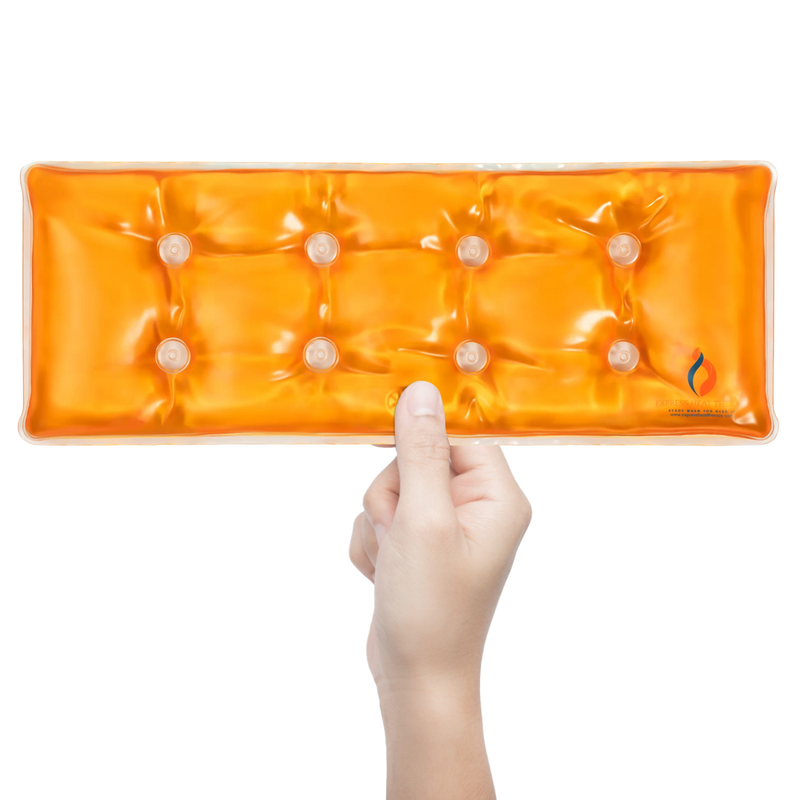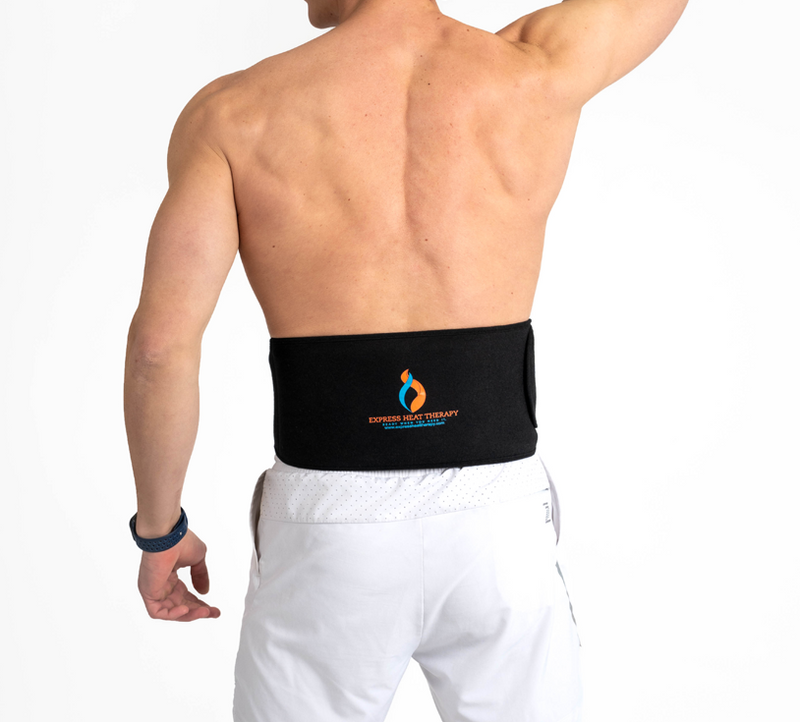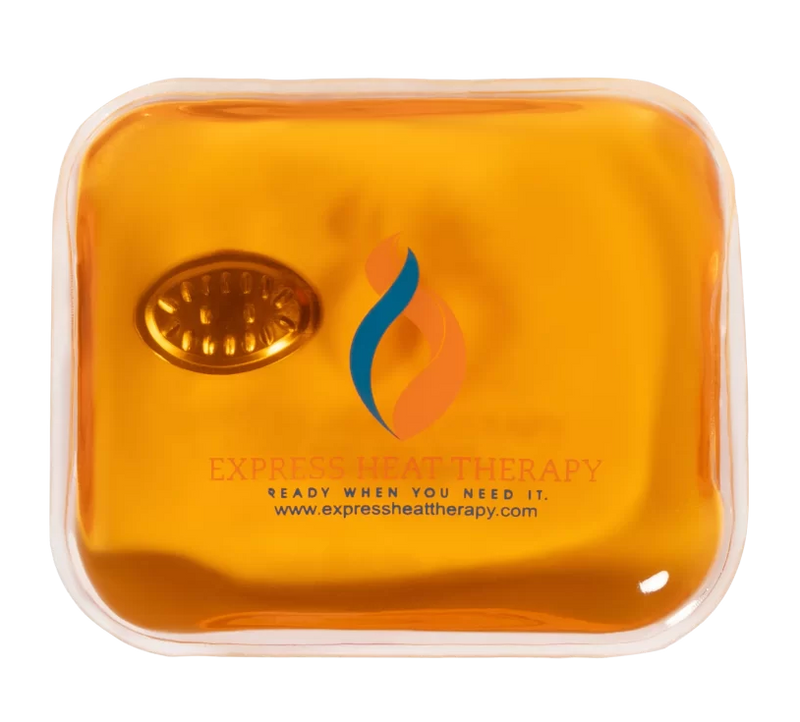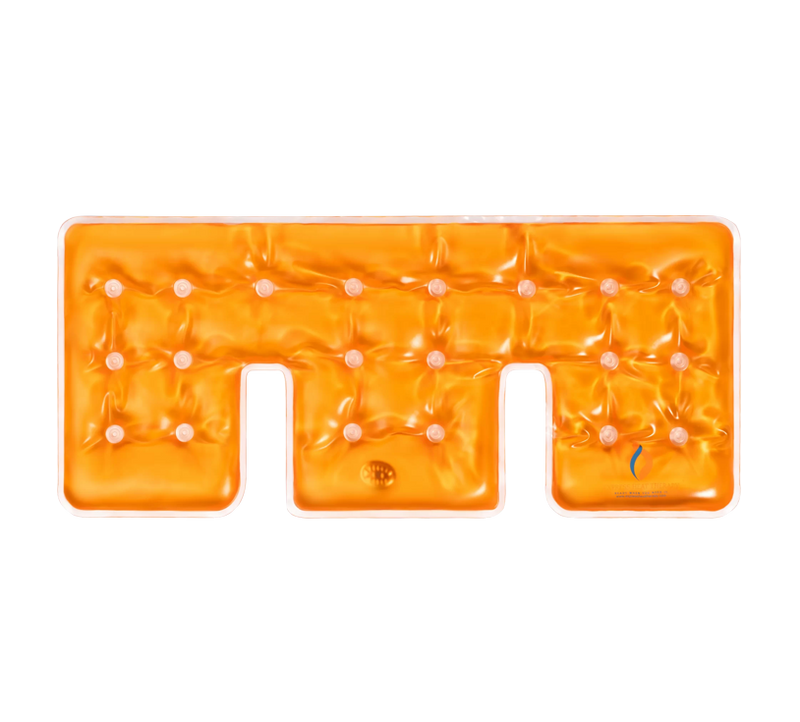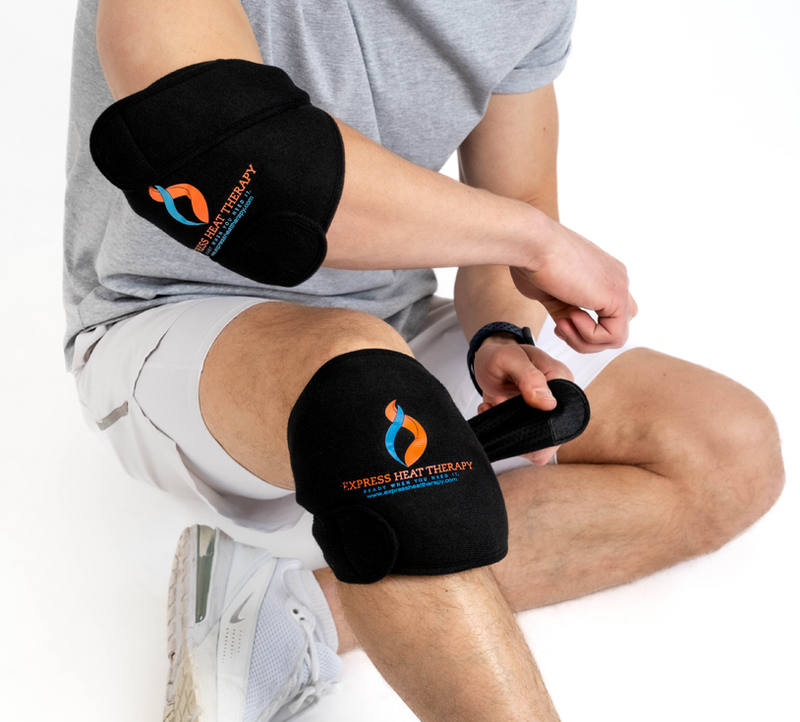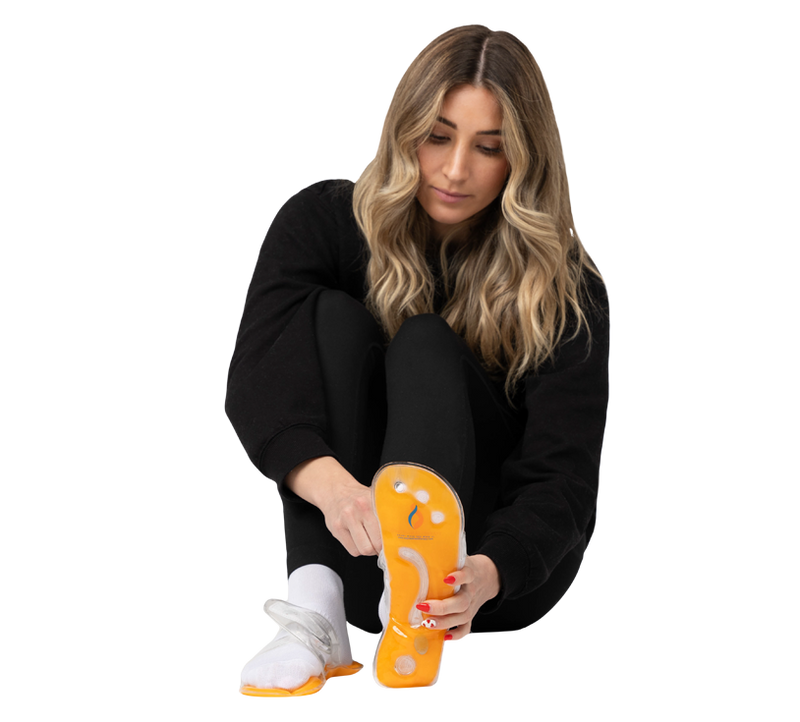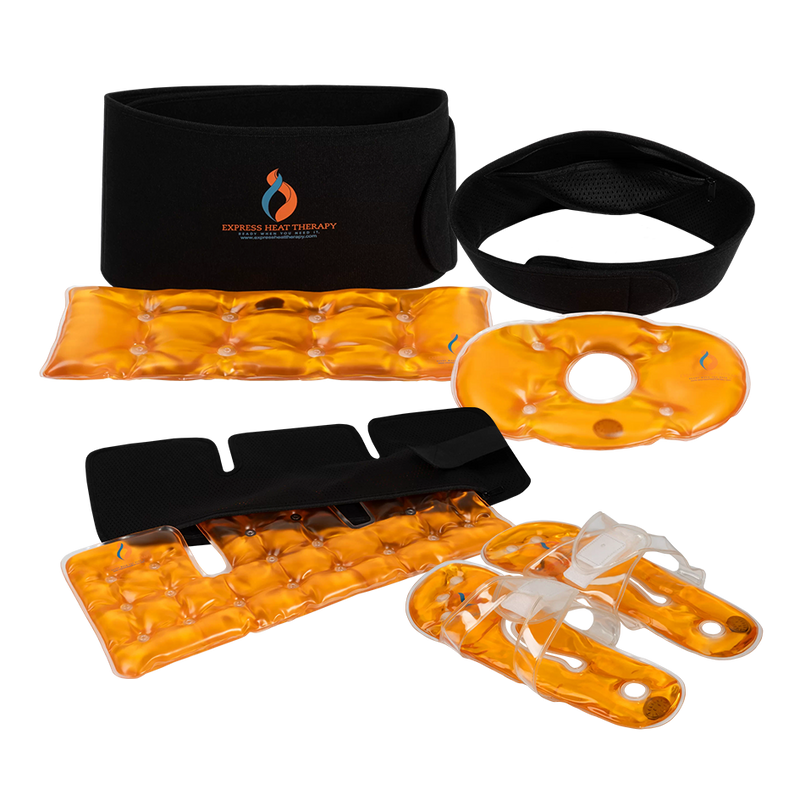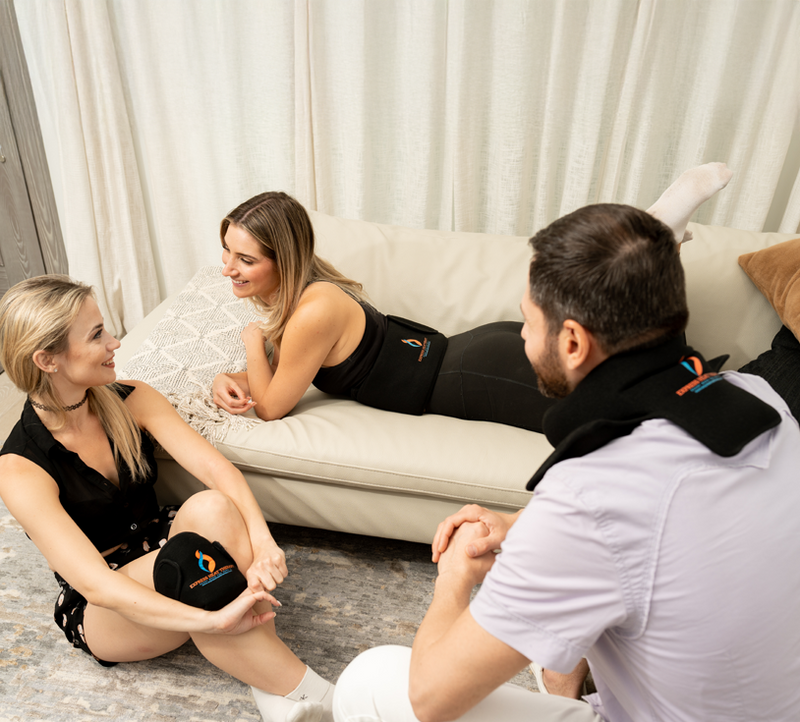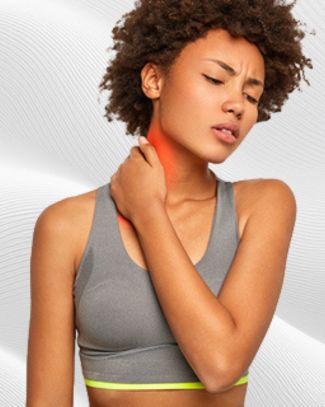If you’ve ever asked yourself, “Why does my leg hurt all the time?”, then you’ve come to the right place. Chronic leg pain affects millions of people, often presenting in various forms, including sharp pain, dull aches, stiffness, or burning sensations.
For many adults, the discomfort lingers day after day, making even simple tasks like climbing stairs, walking to the store, or getting a good night’s sleep feel overwhelming. For others, it’s persistent soreness after exercise or sitting too long.
The good news is that chronic leg pain doesn’t have to define your life. With the right kind of therapy and lifestyle changes, you can find lasting relief.
In this blog, you’ll discover:
-
Causes of chronic leg pain in adults
-
How to cure chronic leg pain
-
Best treatments for chronic leg pain
-
How heat therapy can provide relief
But first, let’s understand the root cause of chronic leg pain.
Causes of Chronic Leg Pain in Adults
Chronic leg pain doesn’t come from a single source. It can stem from a mix of health issues. Some of the most common causes include:
-
Circulatory Issues
Poor blood flow can cause cramping, swelling, or heaviness in the legs. Certain conditions, like varicose veins or peripheral artery disease, restrict circulation and trigger pain.
-
Musculoskeletal Problems
Arthritis, tendonitis, or old injuries can flare up, leading to chronic leg muscle pain relief challenges. Even posture or repetitive strain can wear on muscles and joints.
-
Neurological Causes
Nerve-related conditions like sciatica or neuropathy may create tingling, numbness, or shooting pain.
Often, more than one factor is at play. That’s why a multi-therapy approach works best.
Best Treatments for Chronic Leg Pain
When you’re exploring the best treatments for chronic leg pain, it helps to remember that no single solution works for everyone. Because pain can originate from circulation problems, joint issues, or nerve damage, an effective plan combines medical interventions, lifestyle modifications, and supportive home therapies.
-
Medical Interventions
If the pain is long-lasting, a doctor may suggest physical therapy. Those targeted exercises rebuild strength, improve posture, and ease pressure on sore spots. For inflammation-based pain, anti-inflammatory medications (whether over-the-counter or prescribed) can provide relief.
In cases of advanced arthritis or severe joint damage, surgical procedures such as knee replacement may be considered. Not everyone needs that level of intervention, but it’s reassuring to know the options exist.
-
Lifestyle Adjustments
Carrying extra weight puts extra stress on knees and ankles, so maintaining a healthy weight reduces the pressure on hips, knees, and ankles, lowering the strain that contributes to chronic knee and leg pain.
Healthy diet and exercise matters too. Foods rich in omega-3s (salmon, walnuts, chia seeds) help fight inflammation, while fruits, veggies, and calcium-rich foods keep bones and muscles strong.
Additionally, regular, low-impact activities such as walking, swimming, or cycling boost circulation and help prevent stiffness. Even short, consistent movement breaks during the day can make a difference in long-term comfort.
-
Supportive Therapies
These are the little things that add up. Massage therapy works wonders for blood flow and muscle relaxation. A simple stretching routine keeps your legs from tightening up. And then there’s heat therapy, a favorite for many people with chronic knee and leg pain.
Applying warmth not only soothes sore muscles but also improves circulation and calms those deep, nagging aches. The best part? It’s easy. Reusable heating pads from Express Heat Therapy let you target pain in your knees, calves, or feet whenever you need it. You don't have to use plugs or batteries, just quick, reliable relief.
The golden rule here is consistency. None of these treatments are overnight fix. But if you stick with them, mixing medical care, lifestyle shifts, and supportive therapies, you’ll start to notice the difference. Over time, those painful days won’t feel quite so heavy, and moving around will become a little easier.
Let’s now take a look at some ways to reduce chronic leg pain at home.
Chronic Leg Muscle Pain Relief at Home
You don’t always have to run to the doctor’s office when dealing with ongoing leg pain. A significant amount of chronic leg muscle pain relief can actually begin at home with simple, consistent habits. Some of these habits include:
Stretching it out
Tight muscles are one of the sneakiest culprits behind leg pain. Gentle stretches in the morning and before bed can do wonders. Examples of stretches to do are calf raises, hamstring stretches, or even a quick yoga flow. It keeps muscles flexible, improves circulation, and lowers the chances of waking up with cramps in the middle of the night.
Elevating and resting
After a long day on your feet, give your legs a break by propping them up on a pillow. Elevation helps drain excess fluid, reduces swelling, and lightens that heavy, achy feeling. If your pain stems from poor circulation or blood flow issues, this little ritual can make a noticeable difference.
Compressing for support
Compression socks or sleeves aren’t just for athletes or people on long flights. They gently squeeze your legs to improve blood flow, which is great if you’re dealing with swelling, varicose veins, or that “pins and needles” sensation.
Using Heat therapy
One of the easiest and most effective home remedies is applying heat. Unlike cold packs (which are great for fresh injuries), heat works perfectly for chronic pain because it increases blood flow, loosens stiff muscles, and calms persistent aches.
Why Heat Therapy?
The knees, in particular, take on heavy daily stress from walking, climbing stairs, or even standing for long periods. Over time, cartilage wear, inflammation, or muscle strain can make them feel stiff and achy. The legs, especially calves and thighs, also suffer from muscle cramps, blood flow issues, and overuse injuries.
Applying gentle, consistent warmth directly to the problem area encourages blood vessels to widen, which improves circulation. Better blood flow means more oxygen and nutrients reach the muscles and joints, helping them relax and recover faster. For those experiencing chronic knee and leg pain, this circulation boost is often the difference between waking up stiff and waking up mobile.
Heat also has a soothing effect on nerve endings, dulling pain signals and easing tension. If you’ve ever noticed your knees or calves feeling looser after a warm bath, that’s the same principle at work, but heating pads make it more targeted, convenient, and repeatable. Warmth addresses long-term issues like stiffness, arthritis, and chronic muscle tightness.
Express Heat Therapy’s Back, Neck, Knee & Foot Heating Pad Kit takes this one step further. The reusable design allows you to apply heat repeatedly without the need for batteries or cords, making it a safe and natural way to manage pain throughout the day. The pads are shaped for different areas of the body, so whether it’s your knees after exercise, sore calves after standing, or tired feet at the end of the day, you can target relief exactly where you need it.
Using heating pads consistently can also complement other treatments. For example:
-
Pairing heat therapy with gentle stretching reduces stiffness in joints
-
Applying heat before massage therapy helps muscles relax more quickly
-
Using heat after light exercise helps support recovery and prevent cramping
By integrating heat therapy into your daily routine, you can keep pain under control while supporting the long-term health of your knees and legs. It’s not just about temporary relief; it’s about building a strategy for movement, comfort, and confidence.
However, keep in mind that sometimes, you should see a doctor.
When Should You See a Doctor?
Here are clear signs it’s time to book an appointment:
-
Sudden, Severe Pain
If your leg pain comes on suddenly, feels sharp, or worsens rapidly, don’t ignore it. This could point to an acute injury, a severe muscle tear, or even a blood clot.
-
Swelling or Redness
Noticeable swelling, heat, or redness in the leg may signal infection, vascular problems, or inflammation. A healthcare provider should always review these conditions.
-
Numbness, Tingling, or Weakness
If you’re experiencing chronic knee and leg pain, or “pins and needles,” it may be nerve-related, such as sciatica or neuropathy. A doctor can run tests to identify the cause and prevent progression.
-
Difficulty Walking or Bearing Weight
Chronic knee and leg pain that makes it hard to walk, climb stairs, or stand without support should not be brushed off. Mobility loss often indicates joint degeneration, arthritis, or other musculoskeletal problems that need targeted therapy.
-
Pain That Doesn’t Improve
If you’ve tried lifestyle changes, massage, or chronic leg muscle pain relief strategies like heating pads, but the pain persists or worsens, professional treatment is the next step.
-
Other Warning Signs
Fever, unexplained weight loss, or pain that wakes you up at night may point to systemic health issues that go beyond simple muscle strain.
In all these cases, a healthcare professional can run imaging tests, check circulation, or assess for arthritis and other conditions. They may recommend physical therapy, medication, or even minimally invasive procedures.
Final Thoughts
Remember: self-care and heat therapy are great tools for managing pain, but they work best alongside medical advice. If your symptoms match any of the warning signs above, use heating pads for comfort in the meantime, but don’t delay professional care.
By addressing the causes of chronic leg pain in adults and exploring therapies such as massage, exercise, and heat therapy, you can regain control over your comfort and mobility.
Explore the Back, Neck, Knee & Foot Heating Pad Kit and take your first step toward more comfortable, pain-free living.
